CAC Coins For Less Than $150 Each, Part 4: Washington Quarters
The first part of this series was about classic U.S. copper coins. The second focused on Buffalo nickels. The third concerned Barber Dimes. The topic here of the third part is a CAC-only set of regular issue, silver Washington quarters.
The first part of this series was about classic U.S. copper coins. The second focused on Buffalo nickels. The third concerned Barber Dimes. The topic here of the third part is a CAC-only set of regular issue, silver Washington quarters.
It can be done! A complete set of CAC approved, silver Washington quarters dating from 1932 to 1964 may practically be completed without spending more than $150 on any one coin.
It is best to begin by pursuing some of the substantial number of CAC approved, gem quality (MS65 and higher), silver Washington quarters that sell for less than $50 each. Recently, GreatCollections sold a CAC approved MS66 grade 1947-D for $41.55 on Dec. 8, 2021, a CAC approved MS65 1952-S for $45 on Nov. 28, and a CAC approved NGC graded MS65 1955-D for $41 on Nov. 21.
On Halloween, GreatCollections sold a bunch of inexpensive, CAC approved Washington quarters: a MS65 grade 1950-S for $35, a MS66 grade 1954-S for $38, a MS65 grade 1955 for $29.10, a MS65 1955-D for $27, a MS66 1956 for $24.20, a MS64 1958 for $17, and a MS66 1963 for $32.88.
GreatCollections is not the only firm to sell CAC approved, gem quality Washington Quarters for less than $50 each. On Feb. 18, 2020, Stack’s-Bowers sold a CAC approved, PCGS graded MS66+ 1958-D quarter for $35. On Oct. 24, 2019, Heritage sold a CAC approved, PCGS graded MS66 1950-D for $47. On May 29, 2019, Stack’s-Bowers sold a CAC approved, NGC graded MS64 1949 quarter for $40.
The keys to the series are much more expensive than the just mentioned dates. Collectors need to accept some Washington quarters that grade below MS65 to avoid spending more than $150 on any one of them.
There are CAC approved 1932-D quarters that each have a CPG® estimated retail value of less than $150: one as Poor-1, one as Fair-2, three as AG3, four as G4, one as G6, three as VG8, five as VG10, five as F12 and three as F15. The four G4 grade 1932-D quarters each have a CPG ® value of $105. On May 29, 2019, Stack’s-Bowers sold a CAC approved XF45 grade 1932-D quarter for $144.
The 1932-S is not quite as expensive as the 1932-D in circulated grades. For 1932-S quarters that are CPG® estimated to retail for less than $150 each, the CAC pop report lists three as G4, two as G6, three as VG8, four as VG10, seven as F12, three as F15, four as VF20, five as VF25, three as VF30 and three as VF35. On August 25, 2020, Heritage sold a CAC approved XF40 grade 1932-S for $120.
The 1936-D may be a major stumbling block in a quest to complete a set of CAC approved Washington quarters for less than $150 each or even for less than $250 each. It is hard to find relatively original and appealing 1936-D quarters. Not many circulated 1936-D quarters were properly stored by serious collectors.
When I was a kid, collectors who I knew often talked about 1932-D and 1932-S quarters. My friends rarely mentioned 1936-D quarters, as 1936-D quarters were not cool. Many advertisements then in coin publications emphasized 1932-D or 1932-S quarters in bold letters or in prominent squares. Once, my father drove me to another state to visit a coin store that had advertised a heavily circulated 1932-S for sale. It is unlikely that we ever considered a long drive to see an advertised 1936-D. I do not remember if I ever bought a 1936-D.
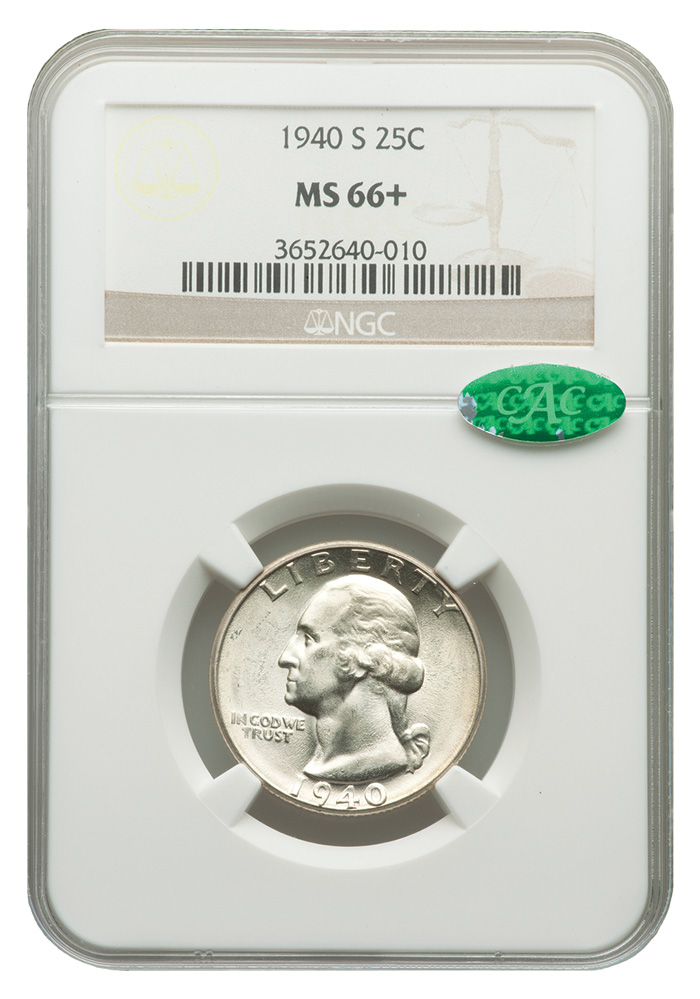 Heritage has auctioned just fifty-one CAC approved 1936-D quarters in
total, most of which realized more than $1,000 each The most recent CAC
approved 1936-D to be sold by Heritage for less than $1,000 was a PCGS
graded MS65+ coin that brought $780 on Dec. 3, 2019.
Heritage has auctioned just fifty-one CAC approved 1936-D quarters in
total, most of which realized more than $1,000 each The most recent CAC
approved 1936-D to be sold by Heritage for less than $1,000 was a PCGS
graded MS65+ coin that brought $780 on Dec. 3, 2019.
Nevertheless, a CAC approved 1936-D quarter can be acquired for less than $150, but it may have to be submitted to CAC after it is acquired or reserved. It is best for collectors to not be in a hurry to purchase a CAC approved 1936-D for less than $150. Moreover, if collectors make clear to their favorite dealers that they demand CAC approved 1936-D quarters in the VF20 to XF40 grade range, more such 1936-D quarters may be submitted to CAC.
A collector with experience buying coins at coin shows, some familiarity with pertinent dealers and a little imagination, could find a way to purchase a CAC approved 1936-D quarter for less than $150 in the near future. Many dealers like to negotiate deals, even deals with strings attached. Perhaps a deal for a circulated 1936-D quarter could be contingent upon the coin being approved at CAC.
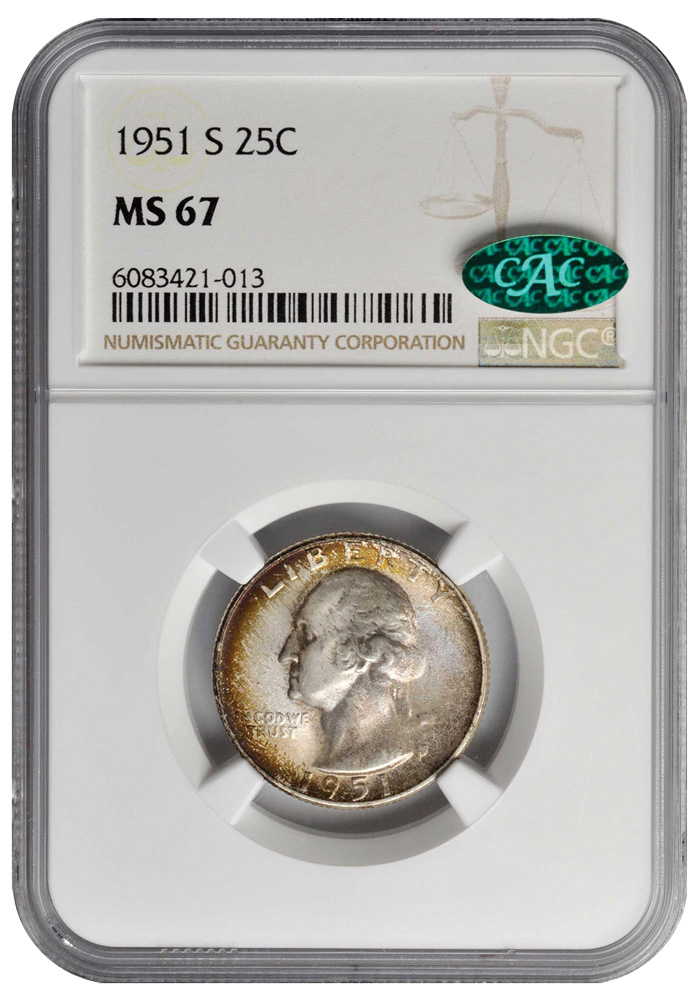 As collectors tend to learn while collecting, it makes sense to acquire
common date Washington quarters before actively seeking keys and semi-keys,
like the 1936-D. On May 19, 2021, Stack’s-Bowers sold multiple CAC
approved, NGC graded MS67 quarters: two dated 1956 for $70 each, a 1957 for
$80, a 1958 for $85, a 1957-D for $105, a 1958-D also for $105, a 1952 for
$110, and a 1951-S for $120.
As collectors tend to learn while collecting, it makes sense to acquire
common date Washington quarters before actively seeking keys and semi-keys,
like the 1936-D. On May 19, 2021, Stack’s-Bowers sold multiple CAC
approved, NGC graded MS67 quarters: two dated 1956 for $70 each, a 1957 for
$80, a 1958 for $85, a 1957-D for $105, a 1958-D also for $105, a 1952 for
$110, and a 1951-S for $120.
In regards to the vast majority of the dates in the set from 1932 to 1964, a CAC approved MS65 to MS67 grade Washington quarter can be purchased for less than $150 each. Recent public sales of coins from the 1940s and 1930s are relevant.
On Nov. 7, GreatCollections sold a CAC approved MS66 1949-D for $81. On Oct. 26, 2021, Heritage sold a CAC approved, NGC graded MS66 1939 for $104. On Oct. 10, GreatCollections sold a CAC approved, NGC graded MS65 1935 for $61.03. On Oct. 5, Heritage sold a CAC approved MS66 1948-S for $104.
On Aug. 10, Heritage sold a CAC approved MS66 1936 for $132. On June 15, an NGC graded MS66+ 1940-S, with a CAC sticker, was sold by Heritage for $101.
In addition to keys, semi-keys and common dates, there are better dates for which CAC approved MS65 or higher grade representatives probably may not be purchased for less than $150 each. The 1932 Philadelphia Mint issue is one of these.
A CAC approved MS66 or MS65 1932 would be likely to cost more than $150 in the current market environment. On June 10, 2018, the Goldbergs auctioned a CAC approved MS64 grade 1932 for $84.
Though not as scarce as the 1936-D, it may be impossible to buy a MS65 grade 1935-D for less than $150. As of Dec. 9, 2021, CAC has not approved any 1935-D quarters that grade below AU58. Like with the 1936-D, it may make sense for collectors to ask dealers to send circulated 1935-D quarters to CAC. Also like with the 1936-D, it would probably be better to complete most of the set before seeking a CAC approved 1935-D.
CAC approved 1935-S and 1936-S quarters that cost less than $150 each can practically be found, though they will be likely to grade below MS65. On April 9, 2019, Heritage sold a CAC approved MS64 1935-S for $94. On March 15, 2020, Heritage sold a CAC approved MS64 1936-S for $138.
The 1939-S and the 1940-D are better dates, too. It may not be easy to find a CAC approved 1939-S or 1940-D quarter for less than $150. Nearly six years ago, on Feb. 14, 2016, GreatCollections sold a CAC approved MS64 grade 1939-S for $117.45. On Aug. 16, 2020, GreatCollections sold a CAC approved MS64 grade 1940-D for $149.62.
CAC has approved three 1940-D quarters in the AU58 grade range, but none lower! If any 1940-D quarters are CAC approved at grades below 58 in the future, they would be likely to retail for prices below $150.
Standard coin references tend to list some die varieties along with the dates in the series of silver Washington quarters. The varieties characterized by slight doubled dies or differences in the boldness of some letters are very subtle and are primarily of interest to people who have been collecting Washington quarters for many years or even decades. People who focus on die varieties tend to like to use microscopes to examine the nuances. Such activities are usually apart from the objectives of budget-minded collectors.
In my opinion, a die variety has to reach out and grab collectors to be extremely important, like 1916/1916 nickels and 1955/1955 Lincolns. The often promoted die varieties of Washington quarters are subtle in nature. Indeed, the doubled dies in the series of Washington quarters are minor in a technical sense, and tend to be very expensive.
Listings of subtle varieties in standard references dampen the excitement of completing a set by date, and lessen the enjoyment of collecting Washington quarters. It would be better if the grading services did not explicitly identify doubled dies in this series. Specialists can identify, analyze and discuss them in contexts geared towards those who collect by die variety.
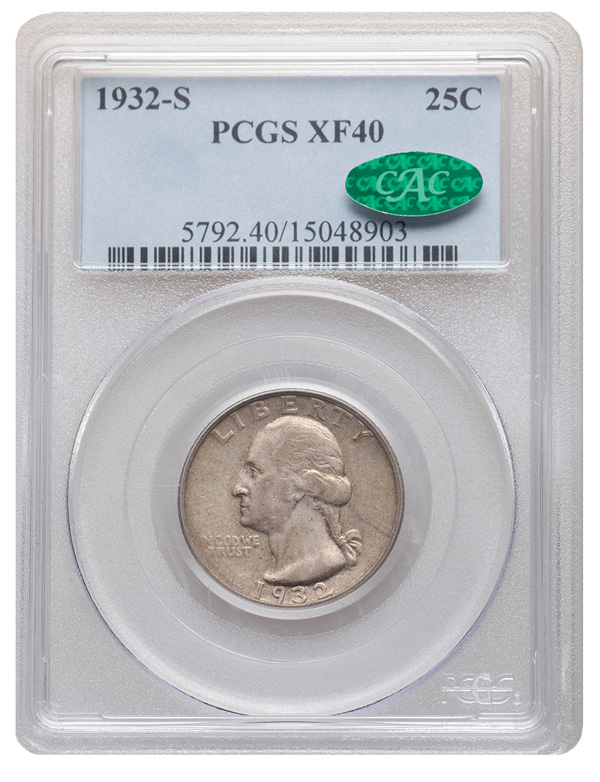 In the context of completing a set by date (including mint locations), it
is neat that a CAC-only set of Washington quarters (1932–64) may
practically be completed while spending less than $150 for each coin. Such
a project may take many months or years, though should be relaxing and fun.
In the context of completing a set by date (including mint locations), it
is neat that a CAC-only set of Washington quarters (1932–64) may
practically be completed while spending less than $150 for each coin. Such
a project may take many months or years, though should be relaxing and fun.
A collector who has much free time may wish to avoid dipped-white Washington quarters, which are easy to find. I suggest seeking coins that have streaks or patches of russet toning, sometimes with green and/or apricot tints. Tones of these colors, occasionally with light to medium blue shades, tend to naturally form on Washington quarters and are often pleasing.
Copyright ©2021 Greg Reynolds
Insightful10@gmail.com

Download the Greysheet app for access to pricing, news, events and your subscriptions.
Subscribe Now.
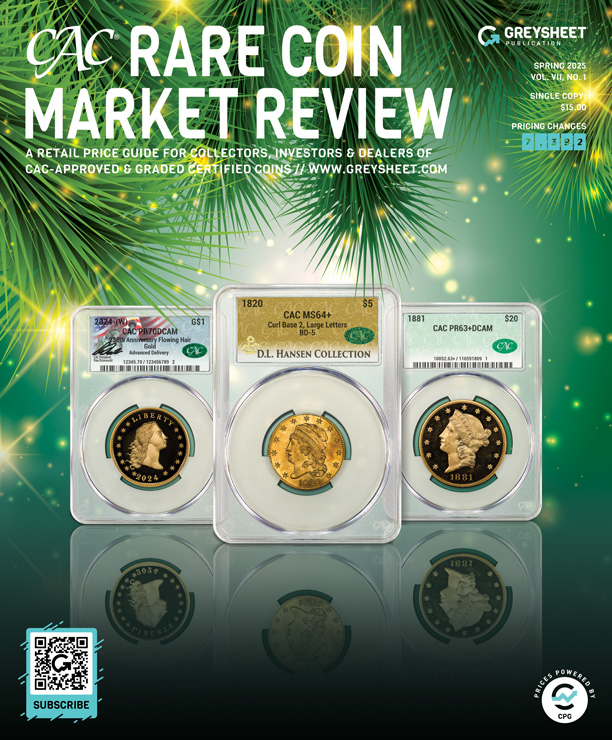
Subscribe to CAC Rare Coin Market Review for the industry's most respected pricing and to read more articles just like this.
Source: Greg Reynolds
Related Stories (powered by Greysheet News)
View all news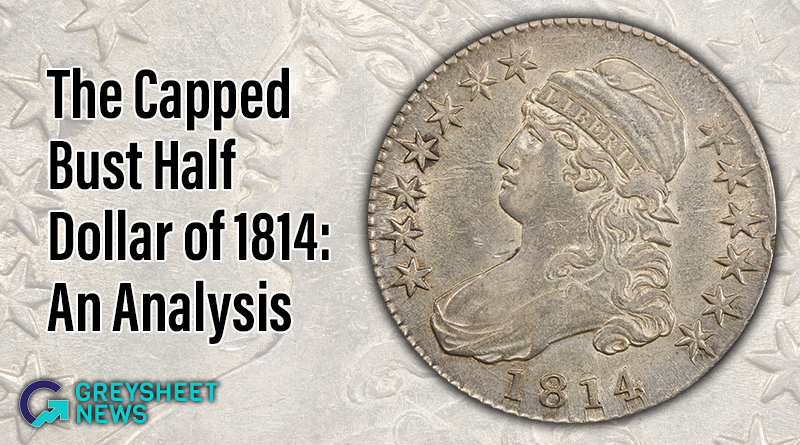
In this article Greg Reynolds analyzes the 1814 Capped Bust Half Dollar.
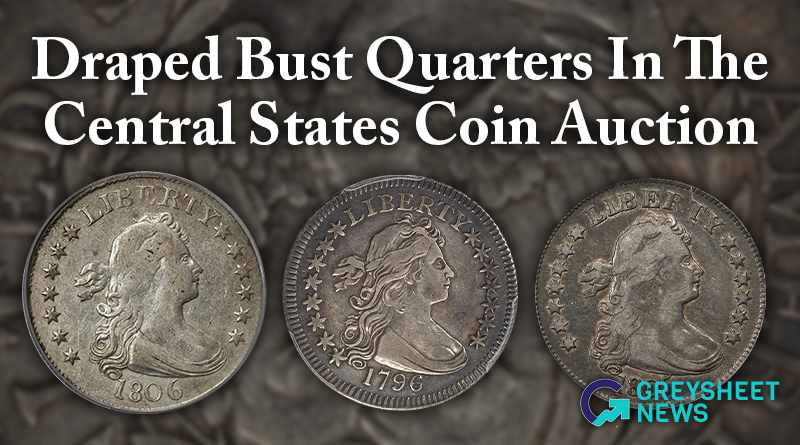
The Lusk set of Draped Bust quarters brought strong results.
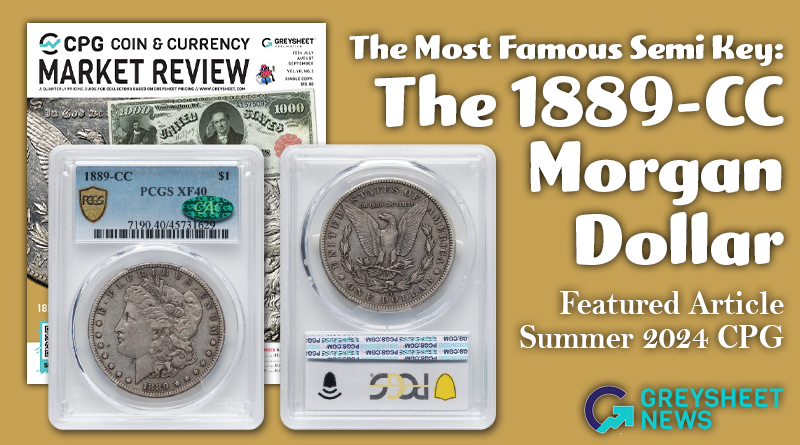
The 1889-CC is the second scarcest business strike in the series.


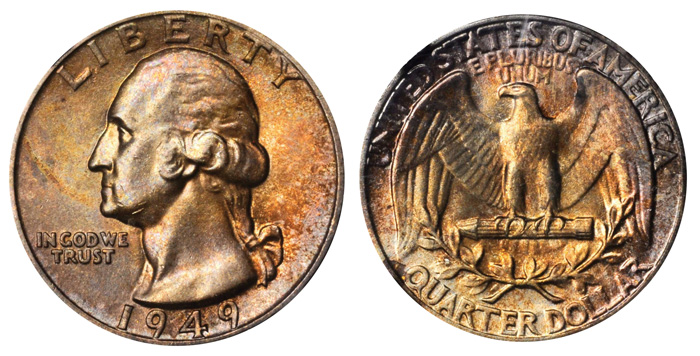






Please sign in or register to leave a comment.
Your identity will be restricted to first name/last initial, or a user ID you create.
Comment
Comments